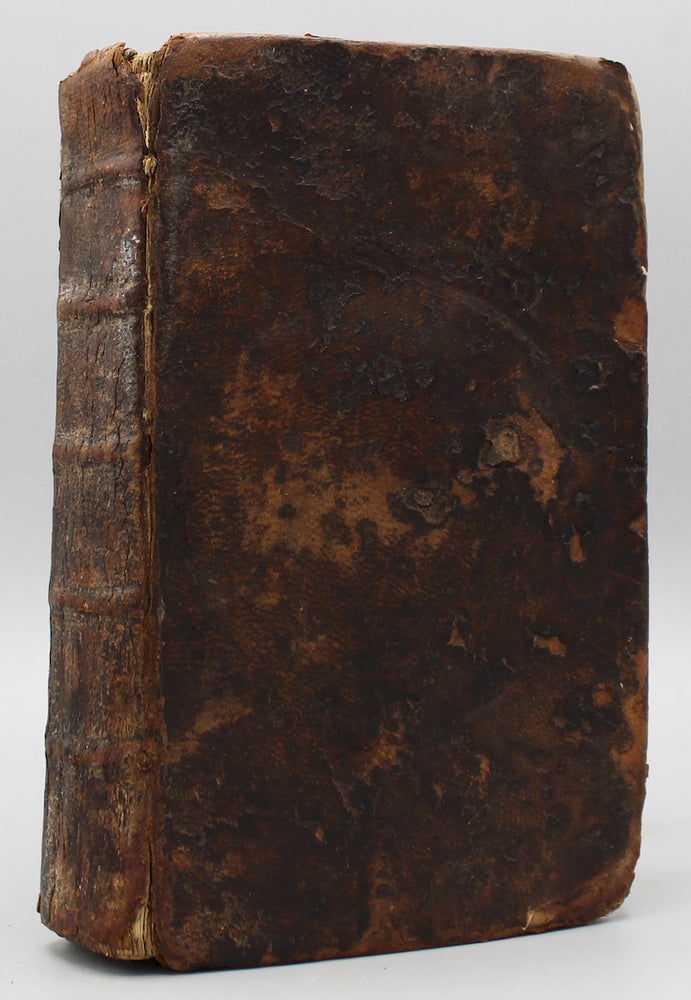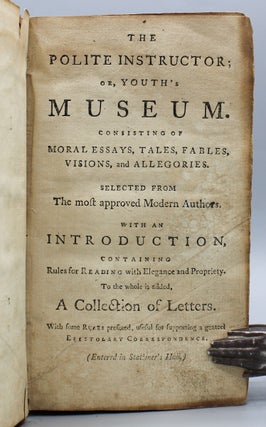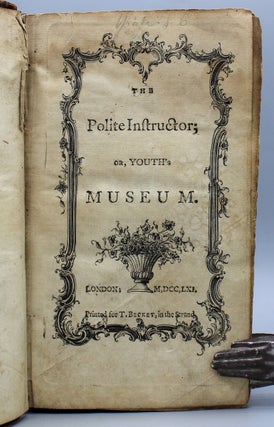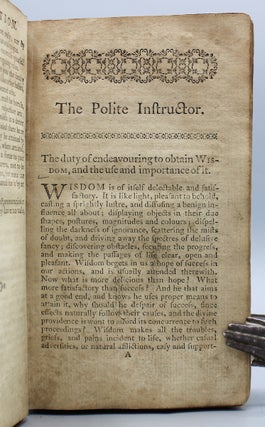The Polite Instructor; or, Youth’s Museum. Consisting of moral essays, tales, fables, visions, and allegories. Selected from the most approved Modern Authors. With an introduction, containing Rules for Reading with Elegance and Propriety, to the whole is added, a Collection of Letters. With Rules prefixed, useful for supporting a genteel epistolary correspondence.
[ London: T. Becket, 1761 ]. First edition.The present work is a conduct guide written specifically for young men — though the ownership signatures in this copy indicate girls’ interest in this work as well — to instruct them in becoming the right kind of gentlemen. The “approved” authors include Pope, Milton, and Locke. Engraved half-title with border and floral vignette. Binding rubbed and front hinge cracking but sound. Circular indentations on both boards from an item left on top of the book. Toning and some dampstaining to leaves. Spotting to last few leaves and to lower endpapers. Ink ownership signature (Sarah Fisher), dated 1772, to front flyleaf and another roughly contemporary ink signature (Mary Fisher) to lower flyleaf. A good copy of an uncommon conduct book for boys. Contemporary dark brown sheep with five raised bands on spine. Twelvemo. 1-18, 1-244 pp. Item #16902
In Rakes, Highwaymen, and Pirates, Erin Mackie writes that the new gentleman of the eighteenth century would secure his authority by ensuring “his own and his family’s worth and honor through education and the personal cultivation of virtues and abilities…he needs to enter into negotiation with members of his family rather than rule through autocratic dictate; further to this, in order to secure the loyalty of his household, he should represent his authority as paternal benevolence.” This kind of gentleman should “shape his emotions, attachments, and conduct within the parameters of polite civility. This mode of polite manners ideally provides a way to socially register and communicate personal virtue as benevolence, sense, taste, affection, and sympathy.”.
ESTC records eight copies: British Library, University of Bristol, National Library of Scotland, Toronto PL, Columbia, McMaster University, UChicago, and UPenn. OCLC records two other copies: one each at the University of Minnesota and Vassar. Cohen, Michéle and John Tosh. Masculinity: Men Defining Men and Gentlemen, 1560-1918. Mackie, Erin. Rakes, Highwaymen, and Pirates (2009), pp. 6-7.
Price: $950.00






